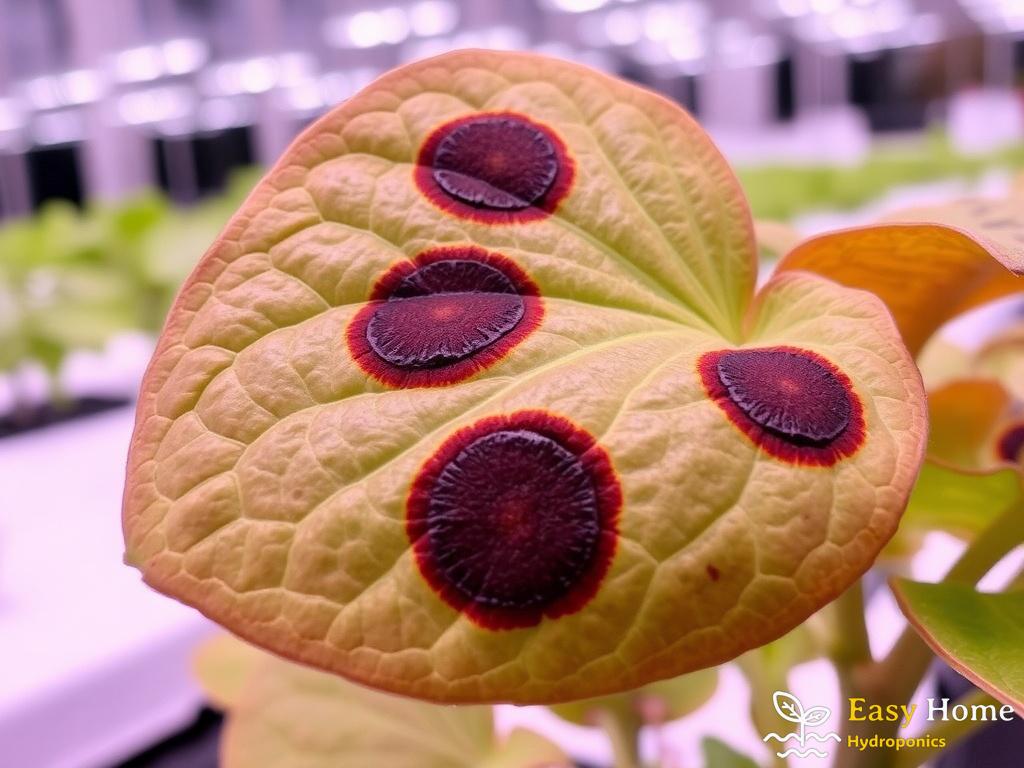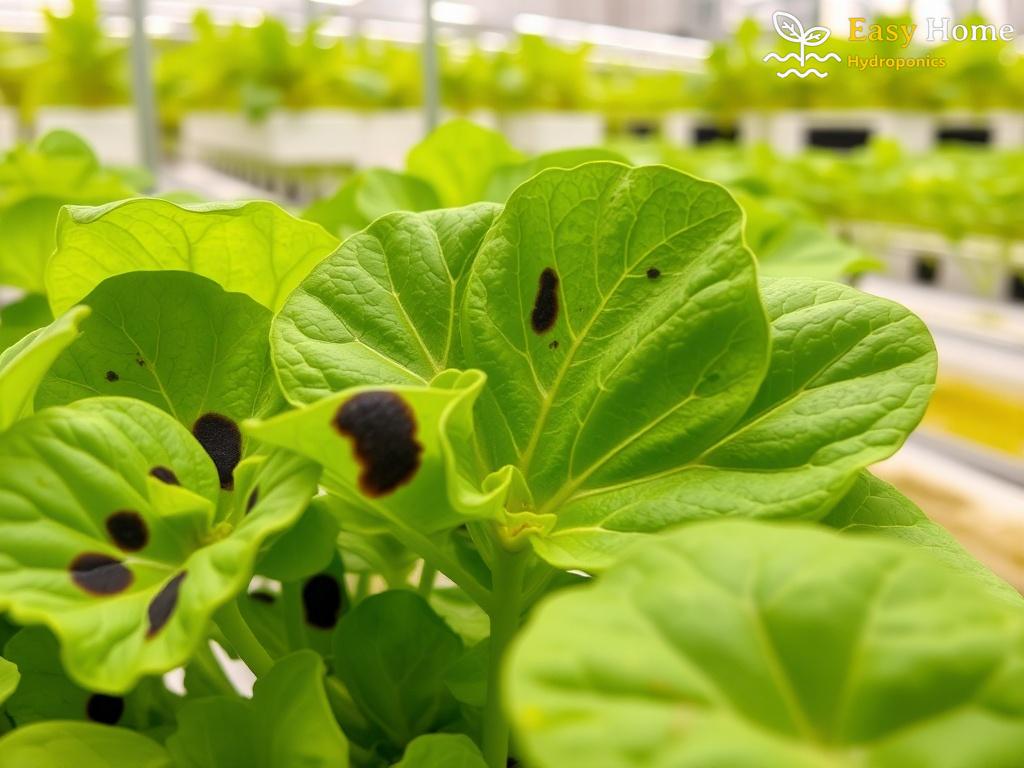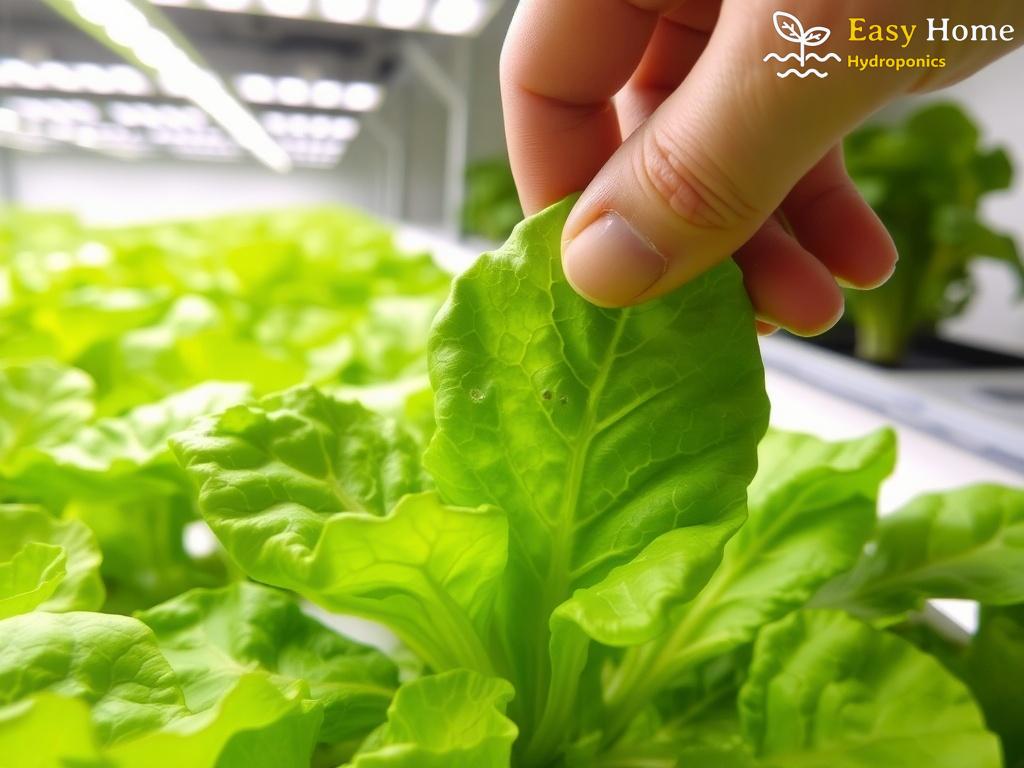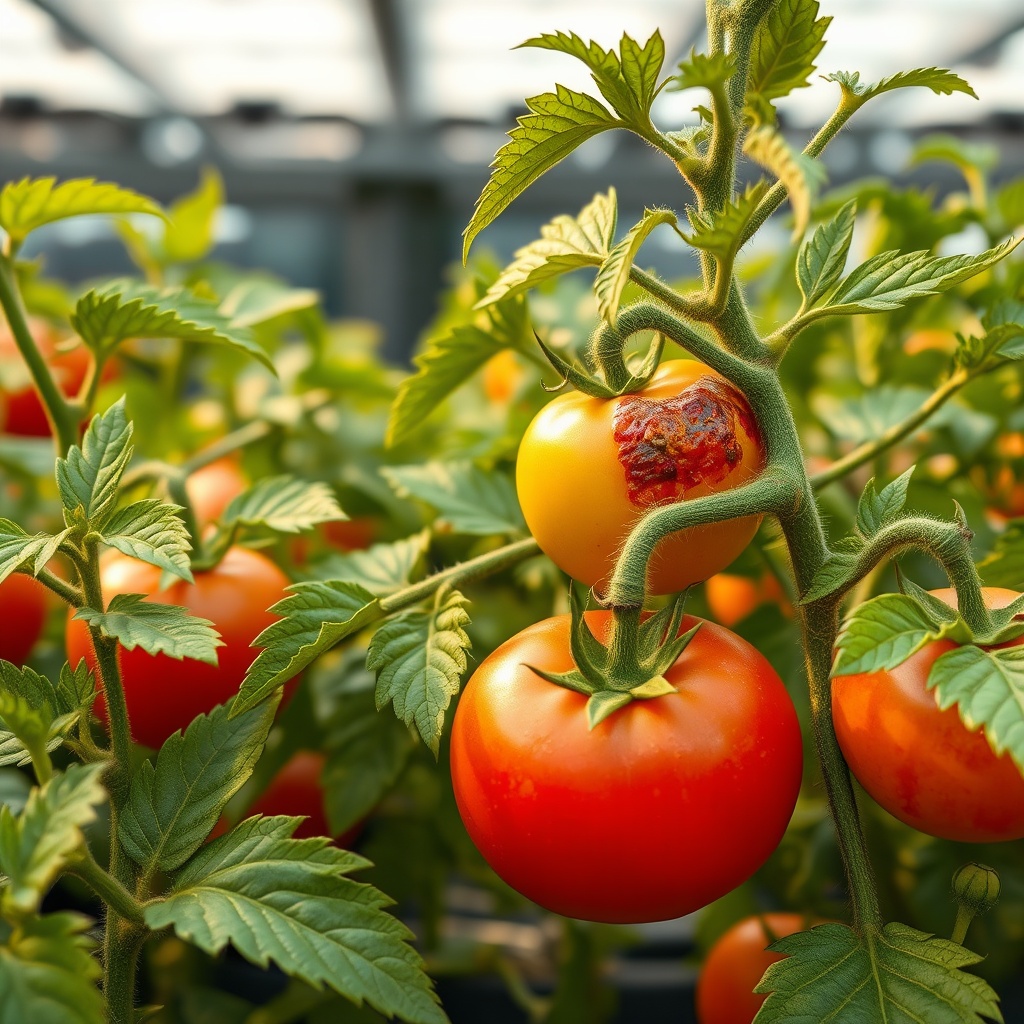Unmasking Alternaria: Identifying the Leaf Spot Menace

In the world of hydroponics, where every leaf is a vital component of the ecosystem, Alternaria leaf spot can be an unwelcome invader. This fungal disease not only threatens the health of your crops but can also lead to significant economic losses if left unchecked. Understanding how to identify this menace is the first step in safeguarding your lush, green investments.
Alternaria leaf spot manifests in various ways, making it essential for growers to be vigilant. The initial signs may be subtle, but with a keen eye, you can catch the infection before it spirals out of control. Here are the key indicators:
- Dark Brown to Black Spots: The most telling sign, these spots often have a yellow halo.
- Irregular Shapes: Unlike other fungi, Alternaria spots can be irregular and varied in size.
- Leaf Wilting: Affected leaves may begin to wilt, showing signs of distress.
- Premature Leaf Drop: In severe cases, infected leaves may fall off before reaching maturity.
Once you’ve identified the signs of Alternaria, the next step involves implementing effective preventive measures. This proactive approach can save you from the headache of dealing with a full-blown infection. Here are some strategies to consider:
| Prevention Method | Description |
|---|---|
| Sanitation | Regularly clean and disinfect all equipment to prevent fungal spores from spreading. |
| Environmental Control | Maintain optimal humidity and temperature levels to create an inhospitable environment for fungi. |
| Crop Rotation | Rotate your crops to disrupt the life cycle of Alternaria and reduce its prevalence. |
| Resistant Varieties | Choose plant varieties that exhibit resistance to Alternaria infections. |
By adopting these practices, you can significantly reduce the risk of Alternaria leaf spot in your hydroponic crops.
Hydroponic Heroes: Preventative Measures Against Alternaria

As hydroponic cultivation gains popularity, the threats posed by diseases like Alternaria leaf spot become increasingly pressing. It is not just about growing plants; it is about protecting the entire hydroponic ecosystem. To combat this insidious foe, cultivators must adopt a proactive mindset, transforming from passive growers into vigilant guardians of their crops.
Understanding the environmental and biological factors that contribute to Alternaria outbreaks is crucial in crafting an effective defense strategy. By integrating knowledge and cutting-edge practices, hydroponic heroes can safeguard their plants against this fungal adversary.
Sanitation in your hydroponic system cannot be overstated. A clean growing environment is your first line of defense against Alternaria. Regularly disinfecting growing trays, pumps, and all other equipment not only prevents the spread of spores but also minimizes the risk of other diseases. Remove any plant debris promptly, as decaying organic matter can be a breeding ground for pathogens. Consider implementing a rigorous cleaning schedule that includes the use of environmentally safe disinfectants.
In addition to equipment, it is equally important to maintain cleanliness in your growing area. This involves ensuring that the surroundings are free of clutter and any potential contaminants, as well as avoiding overcrowding of plants. A well-ventilated and organized environment can significantly decrease the likelihood of infection, allowing your crops to thrive.
Creating an optimal environment for your hydroponic crops involves much more than just providing water and nutrients. Understanding the specific conditions that favor Alternaria is essential. This fungus thrives in high humidity and warm temperatures, making environmental control a key strategy. Regularly monitor humidity levels and strive to keep them below 60%. Utilizing dehumidifiers or fans can help maintain an atmosphere that is inhospitable to fungal growth.
Temperature regulation is also critical. Ideally, aim for a temperature range that supports plant health without inviting fungal invaders. Consistency is key; sudden fluctuations can stress plants and make them more susceptible to diseases. By mastering your growing conditions and maintaining a stable environment, you can bolster your crops’ defenses against Alternaria.
Combat Strategies: Effective Treatments for Alternaria Outbreaks
In the relentless battle against Alternaria leaf spot, understanding effective treatments is paramount. While prevention is crucial, sometimes the enemy breaches your defenses, and it’s time to take decisive action. Fortunately, nature provides us with a range of tools to combat this foe. Utilizing biological control agents can significantly reduce the presence of Alternaria without harming your hydroponic ecosystem. Beneficial microorganisms, such as Bacillus subtilis and Trichoderma harzianum, have shown promise in inhibiting the growth of Alternaria by outcompeting it for resources and directly attacking its spores.
In cases where biological methods fall short, chemical treatments may be necessary to regain control. Fungicides remain a potent weapon against Alternaria, but it is essential to select those that are safe for hydroponic systems. Products containing chlorothalonil or azoxystrobin can be effective, but timing is everything. Apply fungicides at the first sign of infection and repeat at recommended intervals to ensure maximum efficacy. However, growers should always adhere to the manufacturer’s guidelines and consider the potential for developing resistance.
Monitoring your crops closely is vital to developing a successful long-term strategy against Alternaria. Regularly inspect plants for any signs of leaf spot and document your findings. This data can help you adapt your approach over time, tailoring your treatments based on the specific conditions and responses of your plants. By creating an integrated management plan that combines sanitation, environmental controls, biological treatments, and chemical interventions, you can maintain a thriving hydroponic system and keep Alternaria at bay.
Nutritional Defense: Strengthening Crops to Resist Alternaria
In the quest to combat the silent threat of Alternaria leaf spot, growers often overlook one of their most potent allies: nutrition. The right balance of nutrients not only ensures robust plant growth but also enhances the natural defenses of crops against diseases like Alternaria. By focusing on nutritional strategies, hydroponic cultivators can fortify their plants, making them less susceptible to fungal attacks.
Understanding which nutrients contribute to a plant’s resilience is key to developing a successful nutritional defense strategy. The following nutrients have been identified as crucial players in bolstering crop health and resisting Alternaria:
- Nitrogen: Essential for overall plant growth, nitrogen promotes the development of lush foliage, which can outgrow disease symptoms.
- Phosphorus: Vital for energy transfer within the plant, phosphorus enhances root development, ensuring strong uptake of water and nutrients.
- Potassium: This nutrient plays a critical role in regulating stomatal opening, which affects transpiration and moisture management, creating an environment less favorable for fungal growth.
- Calcium: Important for cell wall strength, calcium can help prevent the entry of pathogens and reduce the severity of infections.
- Magnesium: As a core component of chlorophyll, magnesium supports photosynthesis, thereby enhancing overall plant vigor.
To effectively strengthen your crops against Alternaria, it’s not enough to simply provide nutrients; the key lies in tailoring nutrient solutions based on the specific needs of your plants. Regular testing of nutrient levels in the hydroponic solution can help you adjust accordingly. Here are some strategies to consider:
- Conduct Regular Nutrient Tests: Frequent testing of the nutrient solution can help identify deficiencies or imbalances that may hinder plant health.
- Use Foliar Sprays: Applying nutrient-rich foliar sprays can provide a direct boost to plant leaves, enhancing their protective capabilities.
- Implement Organic Amendments: Incorporating organic materials, such as compost or seaweed extracts, can naturally enrich your nutrient profile, promoting healthier plants.
By prioritizing nutritional defense in your hydroponic system, you not only foster a stronger crop but also create a resilient environment capable of resisting the pressures of Alternaria leaf spot. When plants are nourished adequately, they become formidable against potential threats, ensuring a thriving hydroponic harvest.
Monitoring & Management: Keeping Alternaria at Bay in Hydroponics
In the intricate world of hydroponics, where every detail counts, maintaining a watchful eye on your crops can be the difference between a thriving harvest and a fungal infestation. Alternaria leaf spot, with its stealthy approach, can wreak havoc before you even realize it’s there. Therefore, implementing a robust monitoring system is crucial to catch early signs of infection and respond promptly.
Once you have established an effective monitoring routine, the next step is to integrate management strategies that bolster your defenses against Alternaria. These strategies are not just reactive measures; they are proactive steps designed to create an environment where your plants can flourish while minimizing the risk of disease.
- Regular Inspection: Make it a habit to inspect your plants at least once a week. This includes checking the underside of leaves, where spores may first appear, and assessing overall plant health. Early detection is key!
- Record Keeping: Maintain detailed records of your observations. Documenting the conditions in which you notice signs of Alternaria can help you identify patterns and adjust environmental factors accordingly.
- Integrated Pest Management (IPM): Consider adopting an IPM approach that combines biological, cultural, and chemical methods. This holistic strategy not only targets Alternaria but also enhances the resilience of your entire hydroponic system.
- Environmental Adjustments: Implement small changes to your growing environment based on your monitoring. For example, if humidity levels are consistently high, consider investing in dehumidifiers to mitigate the risk of fungal growth.
Ultimately, the goal is to create a hydroponic ecosystem that can withstand the pressures of Alternaria. By focusing on the synergy between monitoring, strategic management, and environmental control, you can cultivate a resilient growing system. This proactive mindset not only protects your current crops but also lays the foundation for future success. Remember, a healthy plant is a powerful defense against disease!




